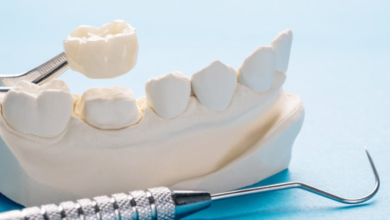Understanding the Tenaculum: A Guide for Healthcare Professionals

In the realm of gynecological surgeries and procedures, precision instruments are paramount. Among these, the tenaculum plays an integral role, though it may not be as widely understood or recognized outside of professional circles. Designed to provide grip and stability on the cervix or other tissues during surgical interventions, this tool is a staple in clinics and hospitals. Below, we delve into the various aspects of this vital instrument, shedding light on its applications, complexities, and the considerations necessary for its effective use. Keep reading to elevate your understanding of tenaculum use in clinical practice.
Understanding the Tenaculum: Essential Tool in Gynecological Procedures
The tenaculum is primarily recognized for its role in gynecological procedures, where it’s used to steady and hold the cervix, enabling better access for practitioners performing examinations or surgeries. Its distinctive design features a handle with a clamping mechanism at one end, which displays sharp, curved prongs to grip the targeted tissue firmly. This precise control over the cervix is especially important during procedures such as endometrial biopsies, IUD insertions, and hysteroscopies.
Given its direct contact with sensitive areas, the professionalism and skill with which a tenaculum is used by healthcare practitioners can significantly impact patient comfort and procedural outcomes. It’s not solely about function; the comfort and safety of the patient are equally prioritized. Thus, selecting a high-quality instrument, such as a tenaculum with proven designs, enhances the precision and safety of these medical techniques.
Beyond its functional importance, the tenaculum also plays a critical role in educational settings. Medical students and residents learn to operate this instrument under supervision, grasping the subtleties of its usage, which involves both technique and an understanding of the anatomy. This training is crucial, as it helps guard against potential complications and instills confidence in new practitioners.
Proper Usage and Handling of Tenaculum in Clinical Practice
The proper handling of the tenaculum demands a balance between firmness and gentleness to mitigate pain and minimize tissue trauma. Practitioners are trained to apply just enough force to secure the cervix without causing excessive discomfort or injury to the patient. This precision is honed over years of practice and is essential for maintaining trust in patient-practitioner relationships.
Correct positioning is also key. The tenaculum must be aligned with the axis of the cervix to facilitate the desired movement or stabilization with the least amount of force. An off-axis application can not only be painful but could also result in tearing or excessive bleeding, which underscores the need for meticulous technique.
In addition, clear communication with the patient before and during the use of the tenaculum can substantially improve the patient experience. Patients should be informed about the sensations they might feel and provided with reassurance throughout the procedure. This collaborative aspect of care is vital in maintaining the patient’s comfort and cooperation.
See also: How to Maintain Healthy Teeth Between Dental Visits?
Tenaculum Complications and Best Practices for Risk Mitigation

While the tenaculum is designed to facilitate gynecological procedures, its misapplication can lead to complications such as cervical lacerations, bleeding, or infection. It’s imperative, therefore, for practitioners to not only be skilled in its use but also to remain vigilant for signs of distress or adverse outcomes in patients. Early recognition of complications can prevent more severe consequences.
To mitigate risks, best practice guidelines emphasize the importance of a gentle approach and continuous assessment of the force applied. Each patient’s cervical tissue can vary in sensitivity and resilience; therefore, individualized consideration is necessary. Careful selection of the tenaculum type, based on patient anatomy and procedure requirements, also plays a crucial role in minimizing potential trauma.
Maintenance, Sterilization, and Care for Tenaculum Instruments
Meticulous maintenance and care are fundamental to the longevity and efficacy of tenacula. After each use, these instruments need to undergo thorough cleaning and sterilization processes to eliminate any risk of cross-contamination or infection. Following established sterilization protocols ensures the tenaculum’s safe reuse and the protection of patient health.
Sterilization techniques, such as autoclaving, are the cornerstone of maintaining the hygiene of the instrument. However, autoclaving must be carried out correctly; improper temperatures or cycle duration can damage the tenaculum or fail to eliminate pathogens. Therefore, the staff responsible for instrument sterilization must be rigorously trained in these procedures.
Overall, the tenaculum stands as an indispensable tool in gynecological practice, yet its use comes with great responsibility. Healthcare professionals bear the task of mastering its application while safeguarding patient safety and comfort. By adhering to the standards of its appropriate use, management, and care, they pave the way for successful medical outcomes and uphold the tenets of patient-centered care.




